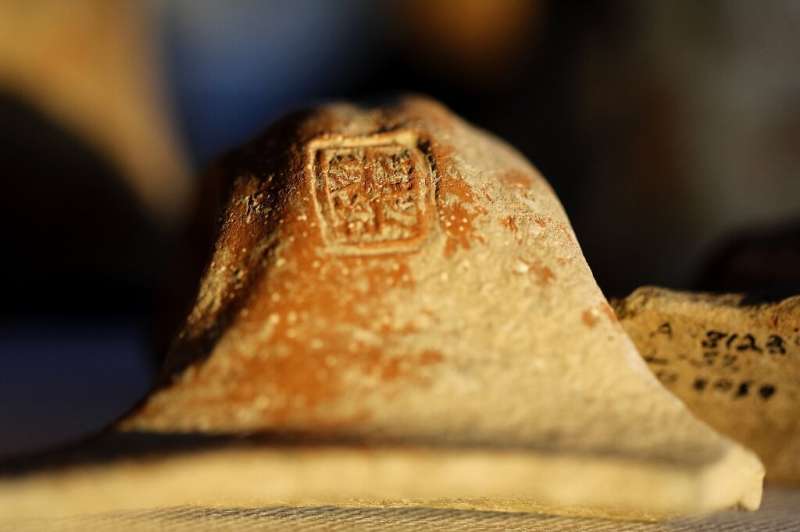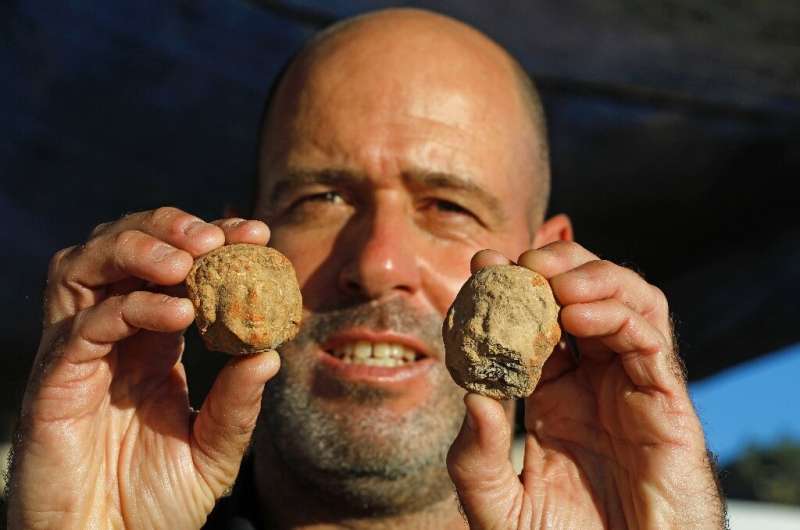Seal impressions unveiled in Jerusalem this week offer rare insight about the administration of the ancient Kingdom of Judah centred in Jerusalem and the collection of taxes
Seal impressions dating back 2,700 years were unveiled in Jerusalem this week offering rare new details about the administration in the ancient Kingdom of Judah, including tax collection.
The kingdom, which lasted from around from around 940 to 586 BC before being destroyed by the Babylonian king Nebuchadnezzar, was centred in Jerusalem.
A few kilometres from the Old City, in the modern day west Jerusalem neighbourhood of Arona, excavators from the Israel Antiquities Authority discovered the remains of a compound with parts of its ancient ashlar walls still visible.
The material found at the site—a few hundred metres from the US embassy—includes more than 120 broken clay jar handles bearing seal impressions that show the Hebrew word "lamelekh", meaning "belonging to the king".
Other seals have the Hebrew names of people presumed to have been officials in the kingdom, or wealthy men key to the economy, according Neria Sapir, excavation director for the IAA.
The IAA described the find as "one of the largest and most important collections of seal impressions uncovered in Israel".
Judean kingdom taxes were collected in the form of agricultural goods, and the site likely "served as a concentration and storage facility for agricultural produce", Sapir said.
Neria Sapir, excavation director for the Israel Antiquities Authority, says the find is "one of the largest and most important collections of seal impressions uncovered in Israel"
The prominence of the structure and its proximity to ancient Jerusalem, combined with the number and type of seals found, led the IAA to conclude the site was a tax collection centre.
The jars, which probably contained olive oil and wine, were collected for the king, who then distributed them, including to leaders of the Assyrian empire, which stretched across the region at the time.
Some of the jars could have been amassed as part of preparations for the failed Judean revolt against the Assyrians around 701 BCE, according to Sapir.
The site made sense as an administrative hub given its strategic location close to Jerusalem, and the abundance of seal impressions found there reinforced its importance.
But excavators were struck by an arduous man-made pile of stones spread across the site, that must have made it a difficult surface to work on.
And yet the site remained a work centre across the span of the kingdom.
Sapir said that could be because something important was buried beneath the stones.
"This is still an unsolved question to us," he said.
© 2020 AFP
























